Tucked away in the breathtaking Muong Hoa Valley, Lao Chai Village is one of Sapa’s most beautiful and authentic destinations. Known for its sweeping rice terraces and welcoming ethnic communities, this peaceful village captures the true essence of northern Vietnam. Visitors can trek along winding mountain trails, stay in cozy homestays, and witness daily life among the Hmong and Giay people. Whether you’re photographing misty landscapes or learning to make traditional crafts, Lao Chai offers a genuine cultural connection. Here, nature, simplicity, and tradition exist in perfect harmony — making every moment an unforgettable experience in the heart of Sapa.
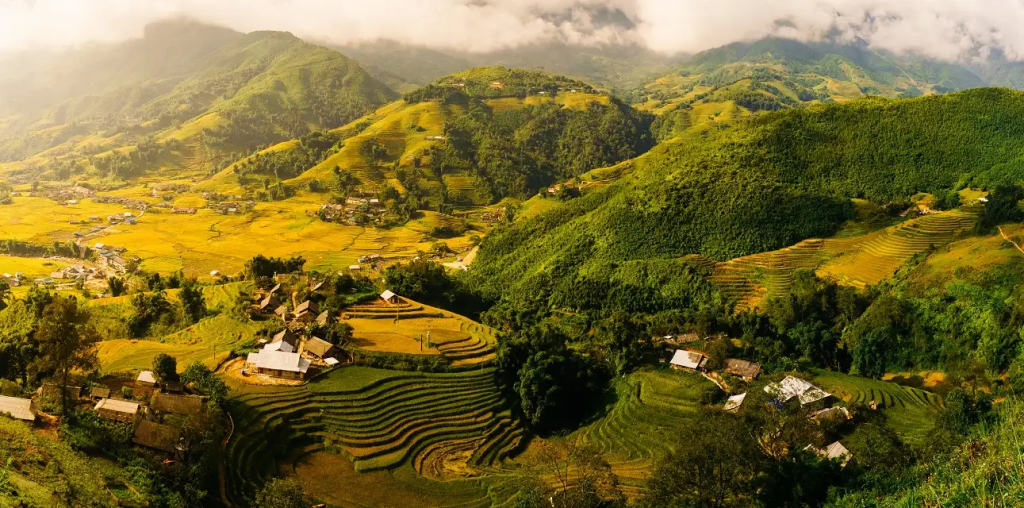
Image for illustrative purposes only. Source: Collected online.
2. The Scenic Beauty of Lao Chai Village
The first thing that captures visitors to Lao Chai Village is its breathtaking landscape — a perfect harmony of earth, water, and sky. Set within the vast Muong Hoa Valley, the village is surrounded by terraced fields that stretch endlessly toward the horizon. This section explores the natural charm of Lao Chai, from its rice terraces to its rivers and mountain views that shift with every season.
The Endless Rice Terraces of Muong Hoa Valley
Few sights in Vietnam are as iconic as the rice terraces of Lao Chai Village. Layer upon layer of fields cascade down the slopes, each shaped by hand over generations. These terraces are not only an agricultural masterpiece but also a reflection of the resilience and artistry of the people who cultivate them.

Image for illustrative purposes only. Source: Collected online.
During spring, the terraces shimmer with water as farmers prepare for planting; in summer, they glow bright green; and by autumn, they turn golden under the harvest sun. Every season paints the valley with a new color palette, making Lao Chai one of Sapa’s most photogenic destinations.
When to visit for the best terrace views:
- March–May: Planting season, when the fields look like giant mirrors.
- June–August: Lush green terraces under clear skies.
- September–October: Golden harvest season, the most stunning time of year.
From sunrise to sunset, the landscape changes constantly — alive with movement, light, and texture.
The Muong Hoa River: Life Along the Water
Flowing gently through the valley, the Muong Hoa River nourishes both the land and its people. Villagers use the river for irrigation, fishing, and daily washing, while travelers admire how it winds gracefully between mountains and rice fields. Crossing the small wooden bridges that connect the hamlets, you can often hear laughter from children playing along the banks or see buffalo grazing by the water’s edge.
The river reflects the sky in a thousand shades — silver at dawn, emerald at noon, and gold in the late afternoon. For photographers, it’s a natural mirror capturing the serenity of rural life.
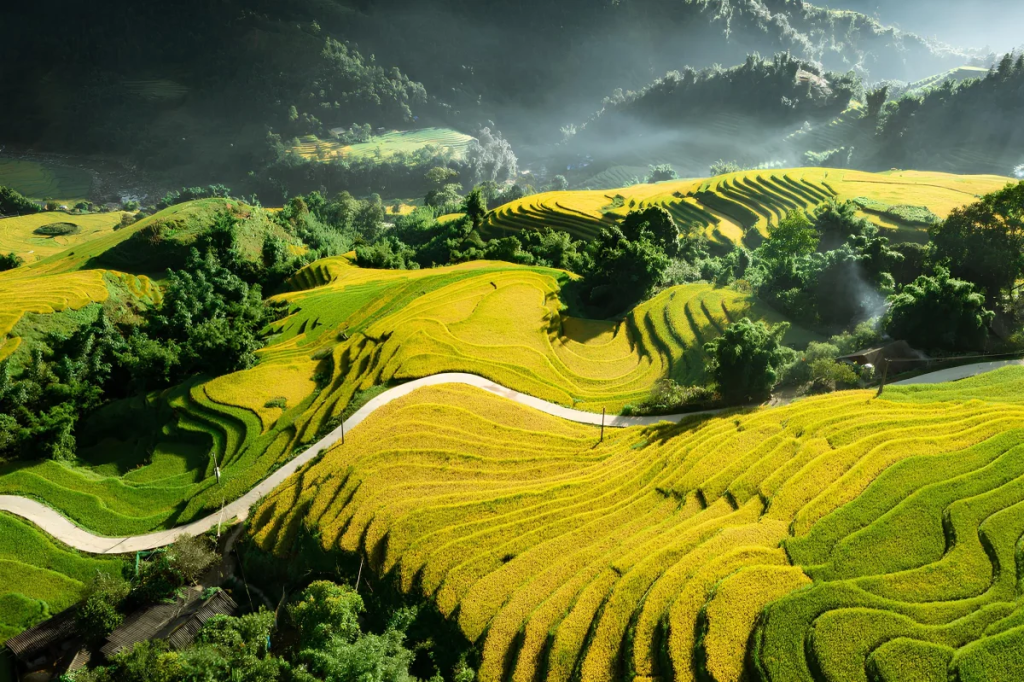
Image for illustrative purposes only. Source: Collected online.
Highlights along the Muong Hoa River:
- Rustic bridges linking villages together.
- Peaceful riverbanks ideal for short walks.
- Perfect photo opportunities during sunrise or sunset.
Every ripple of water in Lao Chai tells a story of connection between humans and nature.
Mist, Mountains, and Morning Light
One of the most unforgettable moments in Lao Chai is watching the valley awaken in the early morning. The mist drifts low over the terraces, hiding the peaks before revealing them slowly in the sunlight. This daily transformation gives the village an almost mystical quality — quiet, fragile, and breathtakingly beautiful.
From certain viewpoints, you can see the outlines of nearby villages like Ta Van and Giang Ta Chai, their houses dotted across the valley floor. The distant mountains of Hoang Lien Son rise like a protective wall around the scene, adding depth and majesty to the panorama.

Image for illustrative purposes only. Source: Collected online.
Best times to enjoy the view:
- Early mornings for misty light and calm atmosphere.
- Late afternoons when sunlight softens over the terraces.
- After rain, when clouds and reflections create a dreamy effect.
The natural beauty of Lao Chai Village is more than scenery — it’s a living landscape shaped by the hands of generations. Every terrace, river, and ray of light tells a story of patience and harmony, making it a place that feels both timeless and alive.
3. Culture and Traditions in Lao Chai Village
Beyond the terraced landscapes and misty mountains, Lao Chai Village thrives as a living tapestry of culture and community. Home to several ethnic minorities, the village offers visitors an intimate look into the customs, craftsmanship, and daily rhythms that have shaped this region for centuries. This section explores the vibrant traditions and way of life that make Lao Chai an unforgettable cultural destination.
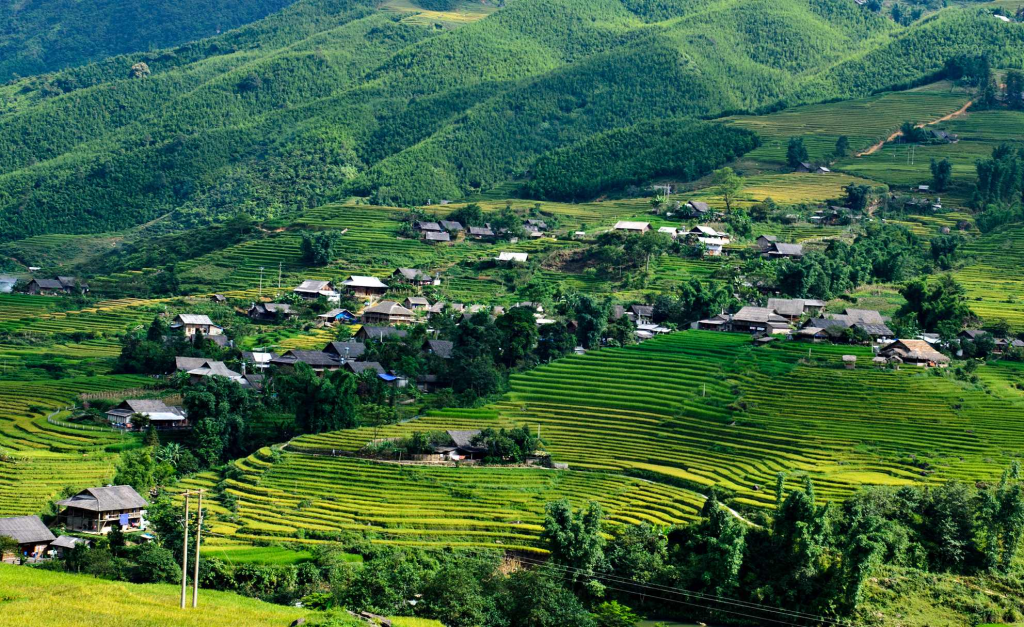
Image for illustrative purposes only. Source: Collected online.
Ethnic Diversity and Community Life
Lao Chai Village is a melting pot of cultures, where the Hmong, Giay, and Dao ethnic groups live side by side in harmony. Each community maintains its own language, attire, and customs, yet they all share a deep respect for nature and for one another. The result is a village that feels rich in color, sound, and tradition.
As you walk through the narrow paths between wooden houses, you’ll encounter Hmong women weaving on bamboo looms, Giay families preparing meals over open fires, and children running freely across the rice fields. The air is filled with the faint scent of herbs and wood smoke — the essence of rural life in Sapa’s highlands.
Cultural highlights of Lao Chai’s communities:
- Hmong people: Known for hand-embroidered indigo clothing and silver jewelry.
- Giay people: Build stilt houses and celebrate communal festivals.
- Dao people: Recognized by red scarves and herbal medicine traditions.
Each community adds its own thread to the cultural fabric of the valley, creating a harmony of difference.
Daily Rhythms and Rural Simplicity
Life in Lao Chai moves with the seasons and the sun. Early mornings begin with farmers heading to the terraces, buffalo plowing the muddy fields, and the rhythmic sound of tools cutting through water-soaked soil. In the afternoons, villagers gather to exchange stories, sew clothes, or work on handicrafts.
Tourists are often invited to take part — whether helping plant rice, trying traditional weaving, or learning to cook local dishes. These experiences are more than tourist activities; they’re genuine exchanges that bridge worlds.
Daily experiences for travelers:
- Join locals in harvesting or rice planting.
- Learn embroidery and fabric dyeing with natural indigo.
- Try cooking Giay-style meals over a traditional wood stove.
This slower rhythm of life offers perspective — a reminder of simplicity and gratitude.
Festivals, Faith, and Folklore
Every season brings new celebrations in Lao Chai Village, blending spirituality with joy. The most important events revolve around nature — harvest rituals, ancestor worship, and festivals thanking the land for abundance. During these times, villagers wear their finest clothes, play bamboo instruments, and dance under lantern-lit skies.
The Hmong New Year is particularly special. Houses are cleaned and decorated, while families gather to eat sticky rice cakes and exchange blessings. For travelers, attending a festival in Lao Chai feels like stepping into another world — one that celebrates harmony between humans, spirits, and nature.
Notable cultural events:
- Hmong New Year (December–January): Songs, games, and family feasts.
- Harvest Festival (September): Prayers for prosperity and gratitude.
- Giay “Roong Pooc” Celebration: Dances honoring the rice fields.
Through these traditions, the people of Lao Chai express their connection to both land and legacy. The culture of Lao Chai Village is alive in every sound, color, and smile. It’s not something to observe from a distance but to experience up close — through shared meals, conversations, and the warmth of a community that still values togetherness above all else.
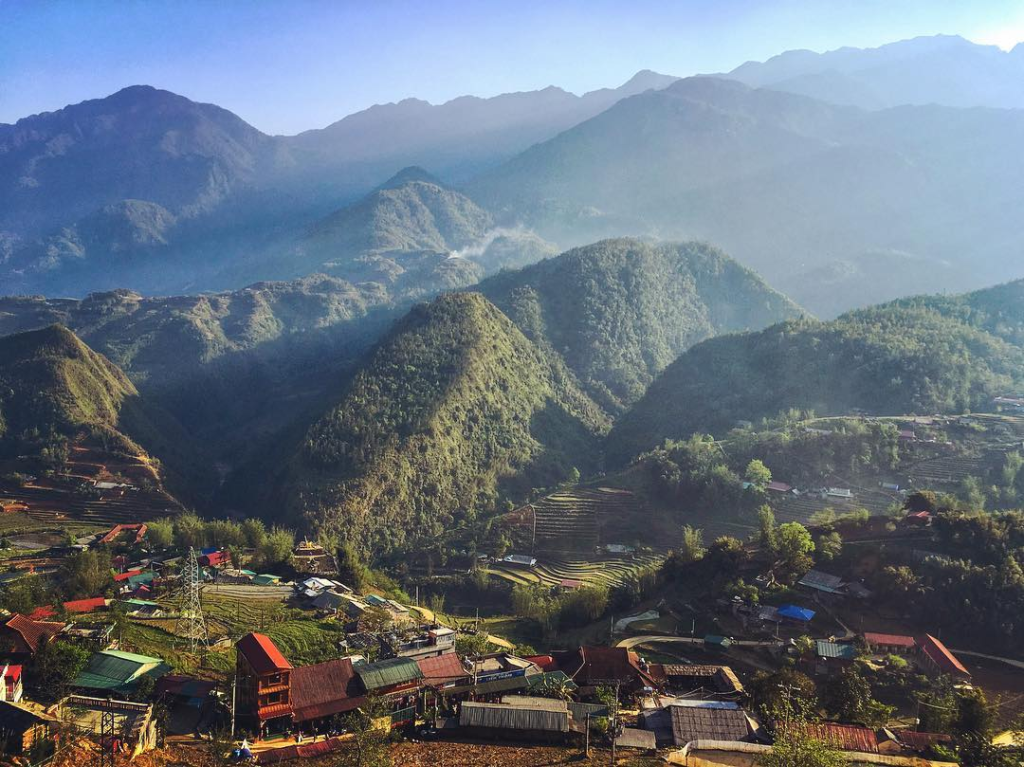
Image for illustrative purposes only. Source: Collected online.
4. Homestays and Local Hospitality in Lao Chai Village
To truly understand Lao Chai Village, you have to live it — and the best way to do that is by staying with a local family. Homestays in the village offer more than just accommodation; they open a window into the culture, food, and everyday life of the people who call this valley home. This section explores what makes the homestay experience in Lao Chai so special and how it connects travelers to the heart of Sapa.
Staying Among the Rice Terraces
Homestays in Lao Chai Village blend comfort with authenticity. Most are built from wood and bamboo, perched on the slopes of the valley and surrounded by rice fields. Some feature modern upgrades like private bathrooms and cozy beds, while others retain their rustic charm — offering simple mats, warm blankets, and the gentle hum of mountain winds at night.
What sets these homestays apart is their atmosphere. Guests wake up to the sound of roosters crowing and the sight of mist rising over the terraces. In the evenings, the scent of firewood fills the air as families gather to cook and share stories. The connection between visitor and host feels genuine — more like joining a household than booking a room.
Highlights of staying in a Lao Chai homestay:
- Immersive cultural exchange with local families.
- Panoramic views of rice terraces and valleys.
- Peaceful environment away from the bustle of Sapa Town.
- Affordable, eco-friendly stays supporting local livelihoods.
Here, hospitality isn’t a service — it’s a way of life.
A Taste of Local Flavor
One of the most memorable parts of any stay in Lao Chai is the food. Meals are prepared using ingredients grown right in the village — fresh vegetables, free-range poultry, and rice harvested from nearby terraces. Each dish reflects both resourcefulness and regional pride, combining mountain ingredients with age-old techniques.
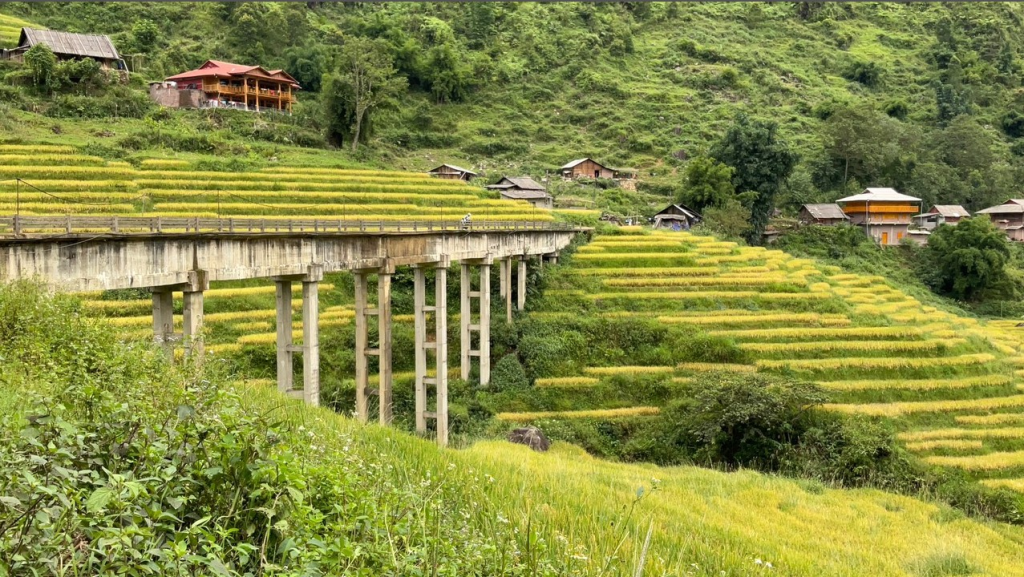
Image for illustrative purposes only. Source: Collected online.
Breakfasts often include warm pancakes or sticky rice, while dinners transform into communal feasts shared around a wooden table. The hosts serve dishes like grilled pork with herbs, bamboo-tube rice, and wild greens sautéed with garlic. A small cup of home-brewed corn wine usually follows, offered as both a toast and a welcome.
Must-try dishes in Lao Chai Village:
- Com lam: Sticky rice steamed in bamboo tubes.
- Thang co: A traditional highland stew of meat and herbs.
- Grilled mountain pork: Smoky and seasoned with wild spices.
- Homemade corn wine: Shared as a gesture of friendship.
Each meal carries the warmth of family life and the taste of the mountain air.
Evenings of Connection and Culture
As night falls, Lao Chai grows quiet, illuminated only by the glow of oil lamps and fire pits. Locals sometimes invite guests to join evening gatherings, where traditional music and dance bring the community together. Children sing folk songs, elders play bamboo flutes, and travelers are encouraged to clap or join the dance.
These evenings are simple yet unforgettable — moments where barriers disappear and shared laughter fills the air. Afterward, guests step outside to a sky ablaze with stars, the terraces glimmering faintly below.
Why evenings in Lao Chai are special:
- Cultural performances by local families.
- Warm communal gatherings over tea or wine.
- Peaceful nights filled with mountain stillness.
Staying in Lao Chai Village is more than a travel experience — it’s an exchange of kindness, stories, and perspective. Every homestay stay leaves visitors not just with memories, but with a sense of belonging to the valley itself.
Read for more information:
- Ta Van Village: Experience Authentic Life in Sapa Valley
- Sapa Tour 2 Days 1 Night: A Short but Stunning Escape into Vietnam’s Highlands
- Muong Hoa Valley: Trek Through Sapa’s Stunning Rice Terraces
At Abite.asia, we specialize in curated Vietnam tours for international travelers, ensuring an authentic and hassle-free experience. Let us take care of your journey so you can fully embrace the beauty of Vietnam. Contact us today at +84363770835 to start planning your adventure!

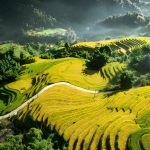

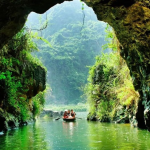
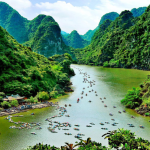
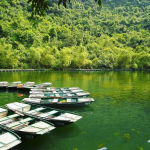
Leave a Reply